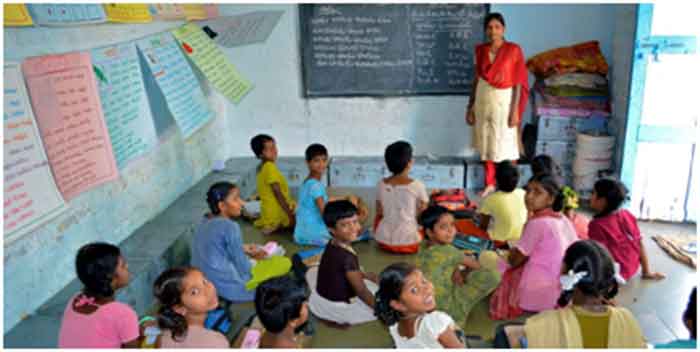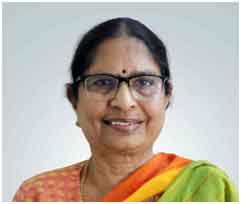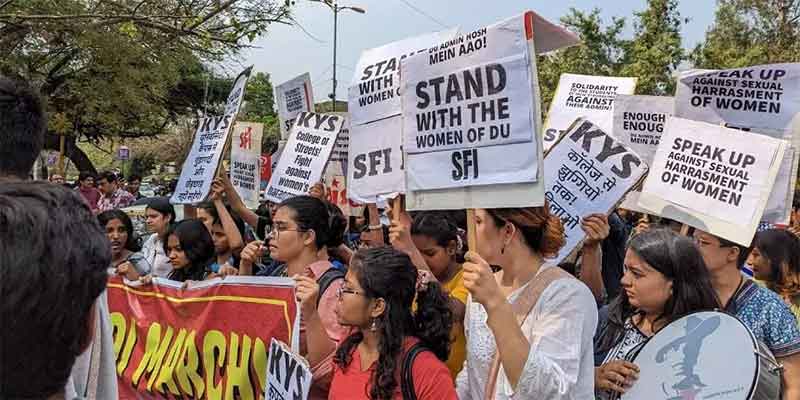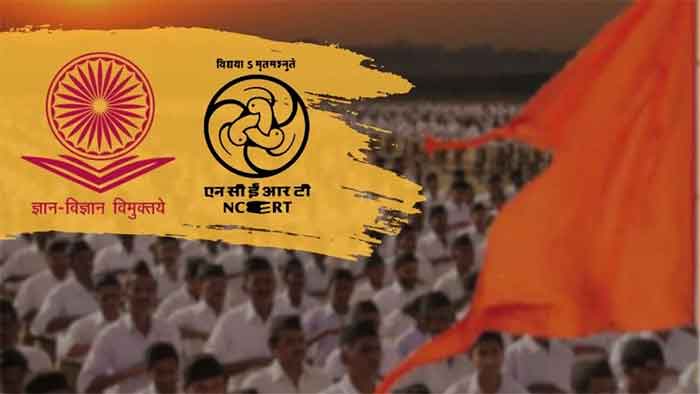Education is the foremost tool that can be used to empower entire communities towards progress. Consider any issue that plagues a community, and education would be a key resolution mechanism. It is therefore of highest importance that right education is dispensed to all members of a community from an early age. This equips them with the necessary skills to take right decisions in their lives and thus, collectively lead their community towards peace and prosperity. However, this is easier said than done, especially in a country like India, where there are over 33 million child labourers. 80% of these children are from rural areas. The doors of education are closed for them by various societal factors and need to be kicked open through a movement that sparks a radical change.

This is precisely what the Mamidipudi Venkatarangaiah Foundation (MVF) achieved in the Rangareddy district of Andhra Pradesh. The foundation played an instrumental part in dispensing education to around 2.4 lakh child labourers who were denied their fundamental right, by initiating a revolutionary movement. The movement is particularly noteworthy for the massive upscale in volunteers that it could achieve within a very short period. A conversation with its founder, Magsaysay awardee Dr. Shantha Sinha, reveals the catalysts behind the success of the movement. The matriarch attributes the success of the movement mainly to the core organizational principles followed by MVF.

The organization currently has a 10,000 strong volunteer base, which played an instrumental part in spreading the movement to over 500 villages and 100,000 children in Andhra Pradesh. Such a huge volunteer network could be realized only because of the respect and trust the organization kept on each volunteer. “The organization has a non-hierarchical structure and the principle of respecting the last volunteer is practiced throughout” says Dr. Sinha. The volunteers are given full autonomy to plan their own funds and the organization supports them by providing the funds with minimal scrutiny. This encourages the volunteers to expand the network further. Moreover, at the ground level, the volunteers act as an amalgamation of all the functions of the organization – planning, designing, implementation etc. This further motivates them towards the organization’s objective.
However, more autonomy to the last worker generally implies lesser control to direct the focus of the movement. Dr. Sinha explains that this sort of a control was never sought at MVF. There was no requirement for directing the movement towards a goal, rather the movement was directing them towards one by providing constant learning from the ground. For example, the foundation had initially worked on a variety of issues apart from child labour and education – land rights, untouchability, women rights. But with time, the volunteers were able to sense that they were sending too many messages to the community and thus losing focus. After a review discussion with all the members, the organization finally decided to focus on the key issue of child rights. “The decision-making process was always based on reviewing whatever was happening- both horizontally and vertically”, remarks Dr. Sinha. Such a process had helped the movement avert mistakes such as incentivising parents to send their children to school.
Right from its inception, MVF had been open to change and innovation. There had never been a fixed template and as new problems arose, new principles were learned. These principles were then easier to internalize for the mobilizers. Moreover, this eliminated the need for a separate training program as well. Also, inclusiveness had also been a non-negotiable principle followed by the movement. “Everyone is a potential ally”, quips Dr. Sinha, “If someone is not joining us then it is our fault; not theirs” So much so that even if people were rude to the mobilizers, they were still respected. Counter violence was not practiced both in physical and emotional spirit. This was especially useful in convincing people who justified child exploitation based on traditions such as child marriage. Even in such conflicting situations, where people were bound by culture unthinkingly, relentless persuasion by the volunteers helped resolve differences and get everyone on board. Such nonviolent techniques had also been useful in implementing the concept of bridge schooling. This concept of reinitiating students deprived of education into schools was initially opposed by the teaching community due to the additional burden. Instead of taking an adversarial stance, MVF promoted greater trust between the community and the teachers by initiating dialogue between them. When the community began to exude trust, the teachers felt motivated to shoulder the extra load. Further, MVF volunteers convinced the Teachers Union, by making them realize the magnitude of impact they could potentially have. Finally, the Teachers Forum against Child Labour was founded, where 3000 government schoolteachers joined hands and fought hard to get every child in their district enrolled in the school.
Certain other factors also played a key role in the propagation of the movement. Usually neighbouring villages were also interested in joining the movement, after seeing the results in a particular village. In order to engage them as well, the volunteers introduced activities such as surveys, which did not require any funds. The foundation eventually made a list of such non-funded initiatives, which was undertaken in neighbouring villages initially. Eventually, once they were ready to manage the activities by themselves, volunteers were recruited from the villages and donors were assigned. Additionally, there was major support from both foreign and government donors, especially the Government of Andhra Pradesh, which also aided in scaling up the movement.
The successful culmination of a movement lies in the building of institutions which will take the effort forward, even if any person is absent. In this regard, the MVF movement was ultimately successful in being a precursor for Dr. Sinha’s role in the establishment of the National Commission for Protection of Child Rights and as a 2-time chairman. Apart from this the foundation also resulted in the setting up of youth forums and child protection forums.
The MVF movement stands as a remarkable model for initiating and sustaining an organic movement towards a social cause. As my conversation with its Dr. Sinha drew to a close, I could not help but feel pure inspiration from the mammoth achievement.
Arun Kumar S is a 2nd year MBA student from IIM Ahmedabad
SIGN UP FOR COUNTERCURRENTS DAILY NEWSLETTER















































